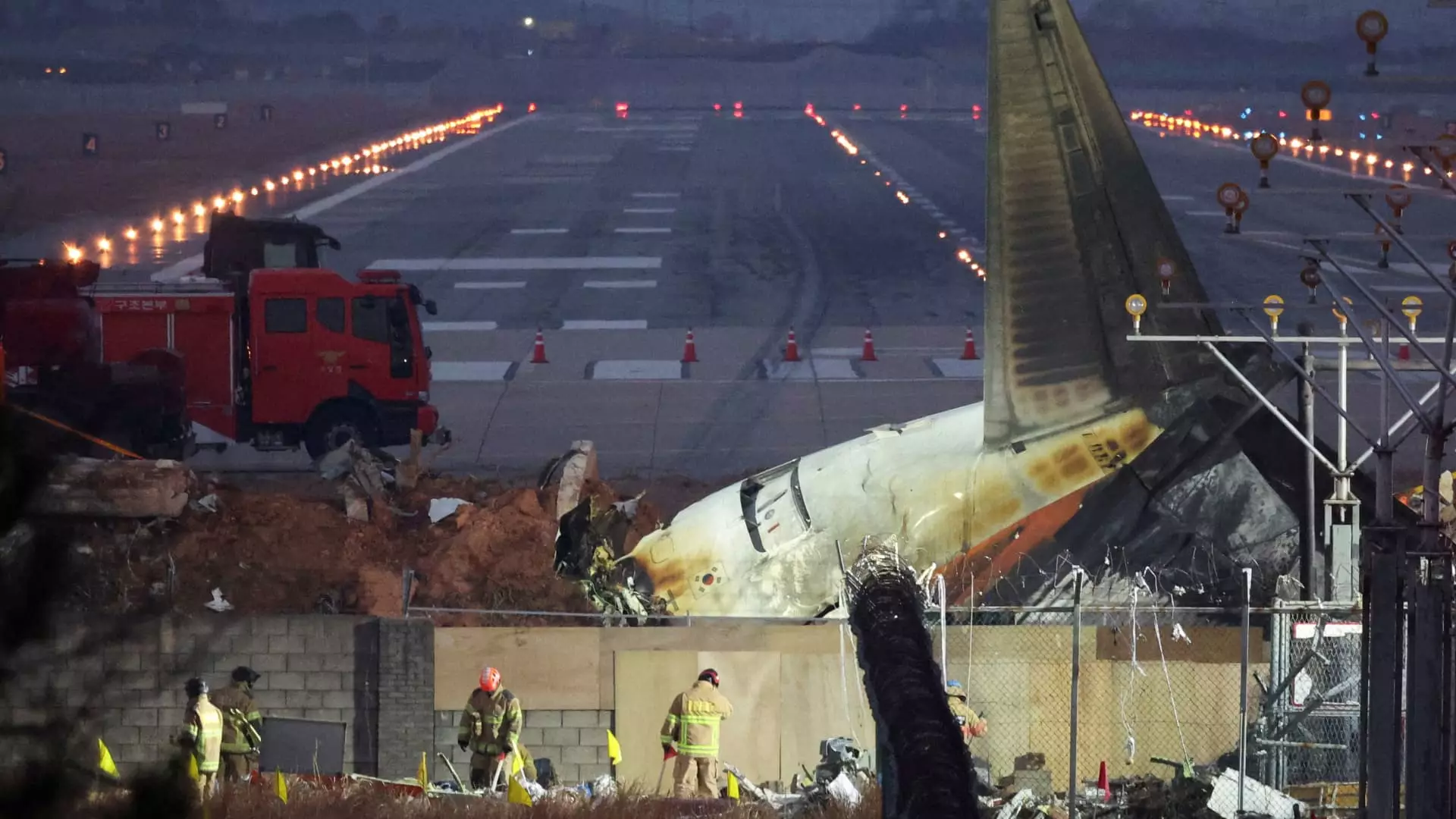The recent disaster involving Jeju Air Flight 7C2216 has sent shockwaves through the aviation community, raising serious questions about runway design and the protective measures in place at airports. On a seemingly routine landing, the Boeing 737-800 was tragically involved in a belly landing early Sunday, resulting in a catastrophic incident that claimed the lives of 179 individuals out of 181 aboard. The plane, returning from an overnight flight, reportedly had its flaps and landing gear retracted, contributing to its inability to land safely on the runway.
A focal point of the investigation revolves around the airport’s design features, particularly the presence of a dirt mound and concrete wall positioned at the runway’s end. Upon impact, the aircraft was propelled into flames after crashing into this obstacle, which housed crucial navigational equipment. Aviation safety experts, including Todd Curtis, contend that this design significantly impaired the aircraft’s capacity to decelerate effectively, making a safe landing an even more daunting challenge. Curtis’s background in safety at Boeing lends credence to the concerns regarding such hazardous runway configurations.
As aviation investigators embark on the arduous task of delineating the causes of this tragedy, they will scrutinize a multitude of factors—from the airplane’s maintenance logs to the conditions surrounding the pilots. Preliminary analyses hint at a possible bird strike that may have compromised engine performance, but experts emphasize that drawing definitive conclusions at this early stage is premature. This investigation represents not merely an inquiry into this one incident but a broader examination of aviation safety protocols and systems.
Several industry professionals speculate that the death toll could have been vastly lower had the aircraft not made contact with the concrete barrier. John Cox, an aviation safety consultant, noted that video footage illustrates a scenario where the plane managed to decelerate effectively until impact with the wall. This observation raises critical concerns about the design’s capacity to mitigate the consequences of such unfortunate accidents. Cox posits that blunt force trauma from the collision is likely the primary cause of death for numerous passengers, underscoring the importance of reviewing existing safety measures.
In comparison, many airports worldwide have implemented engineered material arresting systems (EMAS) designed to absorb energy and reduce the momentum of overrunning aircraft. Notable examples can be found at major hubs, including LaGuardia Airport in New York. The inadequacy of the concrete wall at Muan International Airport, particularly its apparent lack of frangibility—capability to break upon impact—merits intensive examination and consideration for immediate modifications to enhance safety.
The Jeju Air Flight disaster serves as a grim reminder of the need to reassess runway safety measures and airport design. While investigations continue and answers unfold, a pivotal takeaway is the reassurance that a thorough and transparent inquiry can lead to critical changes that prioritize passenger safety. The aviation community must remain vigilant, advocating for designs that integrate modern safety technologies, ensuring that tragedies like this are preventable in the future.


Napsat komentář